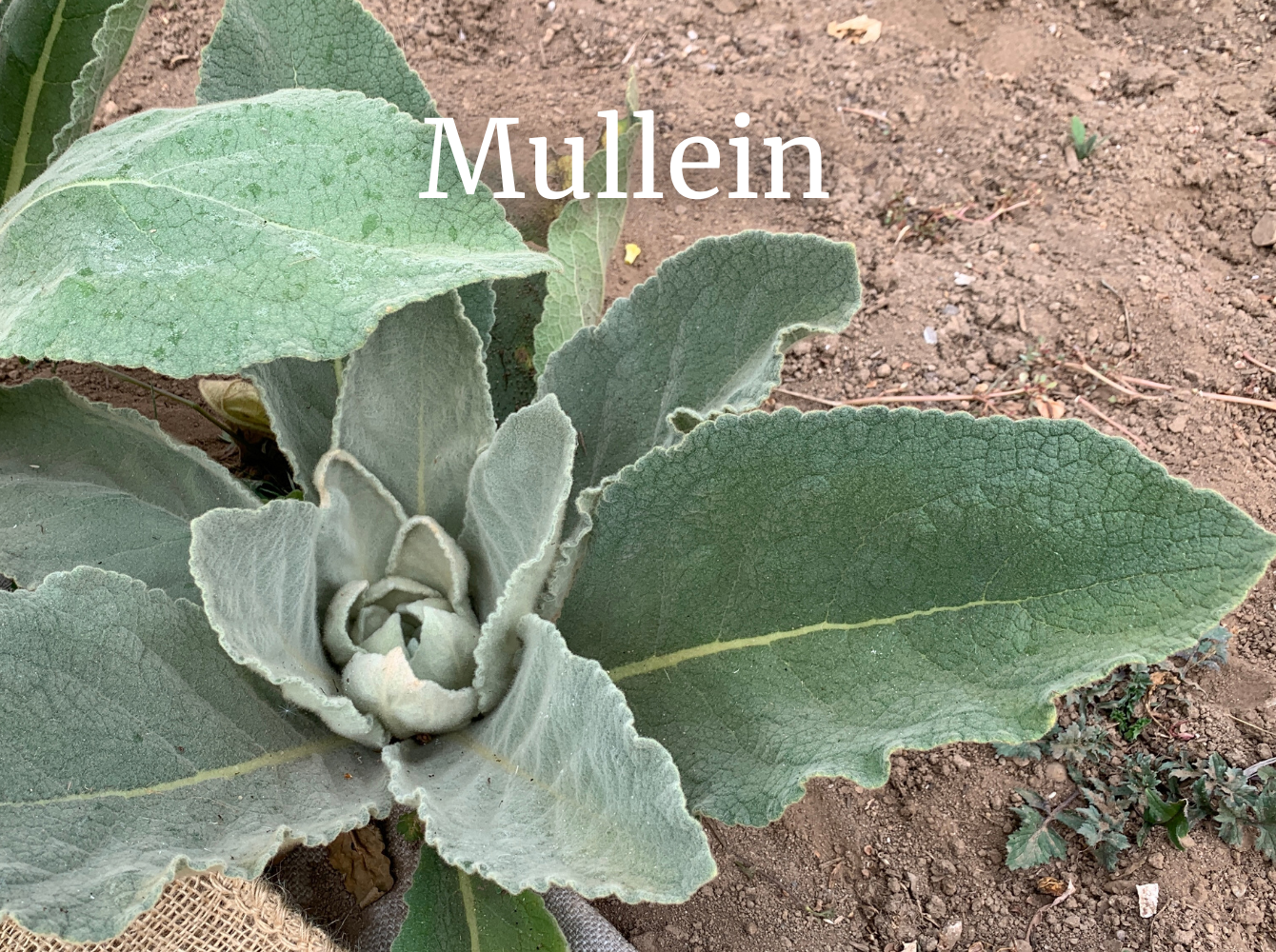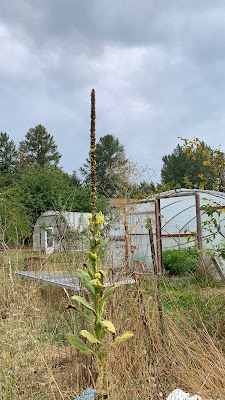Common Mullein is a woolly plant whose name is derived from the Latin word mollis, meaning soft. The entire plant - the leaves, stalk, seed pods are covered in downy fuzz. People have claimed that it is nature’s toilet paper, but I have a distinct memory of testing this out while working on a trail crew and having less than satisfactory results. My experience is that the fuzz gets stuck between your butt cheeks, making for a rather itchy hike out of the woods. The plant has more interesting uses than just being a nice toilet paper - legend has it that Ulysses, Mercury, and Circe used it in incantations and witchcraft. Another alleged use is this: men of the Ozark mountains used mullein to attract love, or at least gauge their chances of success. The man would point the stout stalk in the direction of his crush’s house and see if it sprung upright again. Springing back indicated reciprocated love - laying limp on the ground was an unfavorable sign.
More practically, the Navajo and Amish smoked the leaves (the plant does bear some resemblance to the tobacco plant). The flowers have been infused in oil to treat ear infections, the dried leaves can be made into a tea as a remedy for respiratory congestion, and the seeds have been used by American Indians as a paralytic fish poison. Another common name for mullein is hedge taper or torch. The stalks could be dipped in suet to use as candles or torches.
Mullein is a Eurasian weed that is now widely established in much of temperate North America and is common in fields, roadsides, and dry open places at low elevations. This biennial herb in the first year is only a rosette of basal leaves, and in the second year grows an erect stem with yellow flowers. The large fuzzy leaves are broadly lance-shaped and progressively become smaller up to the stem.
The stalk is covered in yellow flowers with petals that are fused into short tubes with 5 spreading lobes. Once pollinated these produce egg-shaped capsules filled with small and very numerous seeds. Viable seeds have been found in soil samples archaeologically dated to AD 1300 - this might be one reason the plant has been such a successful invasive species.
Resources:





